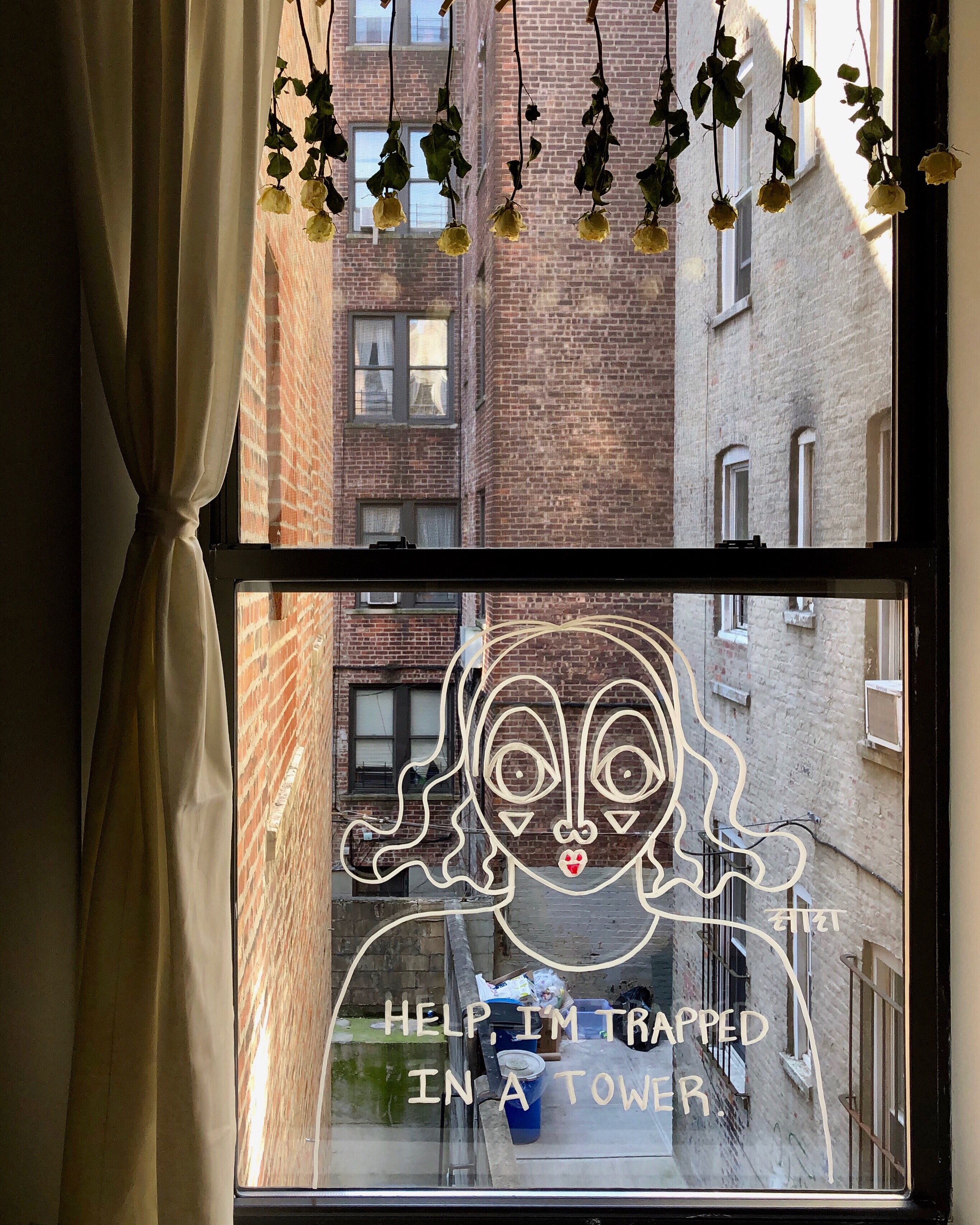
Like cities across the world, New York City has largely shut down, with the government ordering residents to practice social distance and cease all non-essential business. But over the past few weeks, a handful of intrepid street artists still went out there, creating new works of art in public.
“In times of grief or stress, I believe that these pieces are a way that people can visually share their frustrations, or use them to laugh at adversity,” artist Adrian Wilson told Artnet News in an email. “Street art is like the news, fleeting and ephemeral. I hope to use the medium to give people a way to respond to a news event in a more creative, and even humorous, way.”
But everything is different in these unprecedented times, even for street artists. There’s always an element of risk to unsanctioned street art—but normally that does not include potentially jeopardizing one’s health through contact with contaminated surfaces or sick passersby.
“I wore a mask and used a Citi bike to get around as much as possible,” said Wilson, who has since left the city. “I did ask a couple of people to use my phone to photograph me putting up the work, but nobody wanted to touch it in case it had virus on it. That was a new one. A guy shot images on his phone and emailed me instead.”
A street art work by Adrian Wilson. Photo by Adrian Wilson.
After two weeks of leaving works referencing the coronavirus on discarded objects in her Brooklyn neighborhood, Sara Erenthal began to feel under the weather. Concerned that she had contracted COVID-19, she retreated to her apartment.
“As soon as I realized I wasn’t feeling well, I knew I would not be going out,” she told Artnet News. Although Erenthal did not get tested, a call to her doctor suggested the diagnosis, even though she had been taking precautions.
“I had very strict rules for myself,” she said. “If I needed to move anything for a photograph, I would put on gloves and I would sanitize and all that stuff.”
A street art work by Sara Erenthal. Photo by Sara Erenthal.
There were other risks as well. With fewer New Yorkers on the streets, Wilson, whose work includes illegal spray paint, was more concerned than ever about being spotted by the police. “I stuck out like a sore thumb carrying a big stencil and street sign,” he said. “I have been arrested several times before, and I didn’t want to catch coronavirus from a jail cell bench.”
Both Wilson and Erenthal noticed a distinctly different mood across New York City as social distancing began being enforced. “The streets started emptying,” said Erenthal. “I started wondering, should I still be doing this?”
“It was as if a big thunderstorm was coming. Nobody was taking a leisurely stroll or looking around them,” Wilson added. “It’s a grim time.”
A street art work by Adrian Wilson. Photo by Adrian Wilson.
Nevertheless, there were still those who found the time to appreciate art. In her walks through the Prospect Lefferts Gardens neighborhood in Brooklyn, Erenthal found a building with many large objects in its trash area—offering a perfect canvas for her work. She created new pieces there several times, drawing her signature stylized woman’s face with coronavirus-inspired captions on successive days.
“A couple stopped to tell me that they really appreciated it and how much it was making their days,” she said.
Some of Erenthal’s recent captions include: “the art will get damaged if you try to sanitize me;” “help, I’m trapped in a tower”—that one was written inside her apartment window—and “the street is our only museum right now.” In an eerie bit of foreshadowing given her recent health issues, one reads “I hope this isn’t my last public art piece.”
A street art piece by Sara Erenthal. Photo by Sara Erenthal.
Wilson also finds garbage piles to be sources of inspiration. “I enjoy writing on trash because it is both legal and a challenge to come up with spontaneous ideas,” he said. Two messages the artist scrawled on discarded mattresses read: “remember when bedbugs were our biggest fear” and “one flu over the cuckoo’s nest.”
He stenciled works reading “spread no virus”—hoping, of course, that the work would go viral—across the city, sometimes in collaboration with subway artist Jilly Ballistic. She suggested combining Wilson’s slogan with her wheatpastes that incorporate historical images, often of World War I-era figures in gas masks.
A street work by Adrian Wilson. Photo by Adrian Wilson.
Another piece was an official street sign that Wilson bought online, altering it to read “STAY IN, SANE” and temporarily bolting it up around the city, until it was stolen. “I felt it was important to do these pieces as a creative defiance against the impending doom,” Wilson said.
“Art is a really great tool for coping and healing, especially when we’re going through difficult times,” said Erenthal, who says she is already on the mend and eager to get a clean bill of health and leave her apartment again. “There’s something about the street that keeps me thriving,” she said. “I needed it for myself, but I think it is a gift for everyone.”
See more street works below.
A work by Adrian Wilson, paired with work by Jilly Ballistic. Photo by Adrian Wilson.
A coronavirus-inspired street art piece by Sara Erenthal. Photo by Sara Erenthal.
Adrian Wilson’s “Spread No Virus” slogan.
A coronavirus-inspired street art piece by Sara Erenthal. Photo by Sara Erenthal.
A coronavirus-inspired street art piece by Sara Erenthal. Photo by Sara Erenthal.
A coronavirus-inspired street art piece by Adrian Wilson. Photo by Adrian Wilson.
A coronavirus-inspired street art piece by Sara Erenthal. Photo by Sara Erenthal.